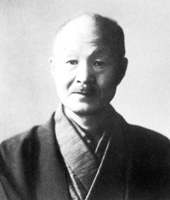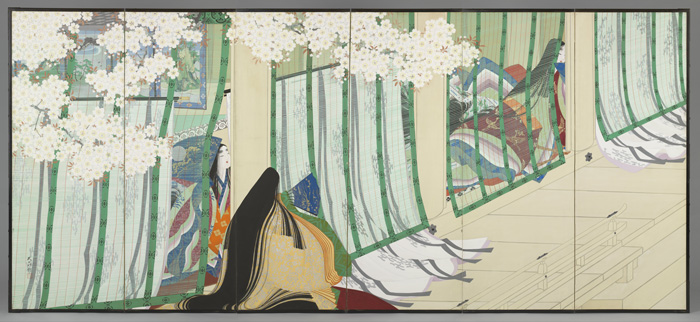Prints in Collection
Biographical Data
Biography
Ogyū Tensen 荻生天泉 (1882-1947)1
Sources: Most of the below information is translated from information provided in Japanese by the Nihonmatsu City Board of Education Museum Collections website https://jmapps.ne.jp/nhmsik/det.html?data_id=6635 and the Fukushima Prefectural Board of Education websites including http://www.gimu.fks.ed.jp/shidou/jiten/cgi-bin/index.cgi?sheet=detail&name=%A4%AA%A4%AE%A4%E5%A4%A6%A4%C6%A4%F3%A4%BB%A4%F3&area=%C6%F3%CB%DC%BE%BE%BB%D4&hen=jn and http://www.gimu.fks.ed.jp/shidou/jiten/cgi-bin/jnbt.cgi?id=view&cd1=%C5%EC%CF%C2%C4%AE&cd2=%C7%EB%C0%B8%C5%B7%C0%F4
 | Ogyū, a popular nihonga style painter, was born on April 28, 1882 with the name of Ogyū Moritoshi 荻生守俊 in present-day Nihonmatsu City, Fukushima Prefecture. His father was a Shinto priest. From a young age Ogyū wanted to be an artist. After his schooling in the Fukushima area, he attended, and graduated from, Tokyo Fine Arts School (Tōkyō Bijutsu Gakkō), where he was taught by the well-known Kanō school painter Gahō Hashimoto (1835-1908), who was instrumental in the development of a new type of national painting called nihonga.1 Ogyū was selected to participate in the first Bunten exhibition (Ministry of Education Fine Arts Exhibition) in 1907, in which he won an award. He went on to win many other awards at the Bunten exhibitions and the exhibitions of its |

The Bamboo River (Tales of Genji, Chapter 44) by Ogyū Tensen, c. 1915/c. 1940
Folding screen, ink, dyes, silk - 30 x 66 3/4 in. (169.5 × 376 cm)
Source: Rijksmuseum AK-RAK-2016-2-1 http://hdl.handle.net/10934/RM0001.COLLECT.625195
It is unclear how many designs Ogyū created for woodblock prints. The Nihonmatsu City website shows a number of works on paper by the artist (along with a number of paintings), but doesn't specifically identify them as woodblock prints. This collection’s woodblock print Itsukushima is the one confirmed example of a woodblock designed by him and it is unknown if it is an original design for this print or a copy of an existing work by the artist.
1 The artist's date of death is variously given as 1945, 1946 or 1947. I've used the date given by the Yamatane Museum of Art and the Museum of Fine Arts, Boston.
2 Japan Art Institute, founded by Okakura Tenshin (1862-1913) in 1898 when he left the Tokyo School of Fine Arts.
